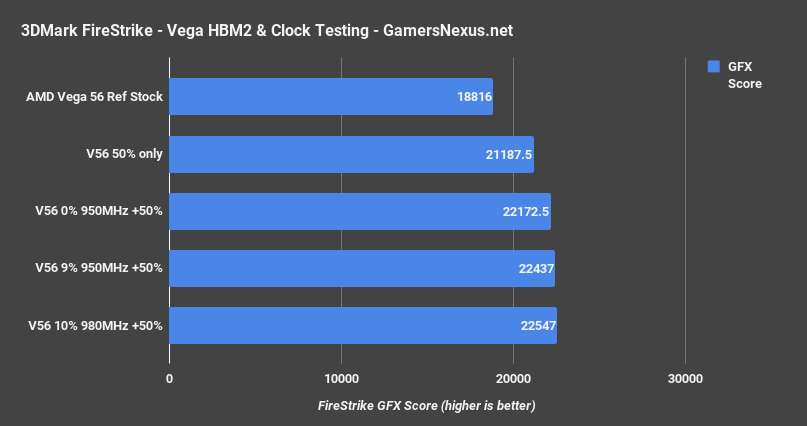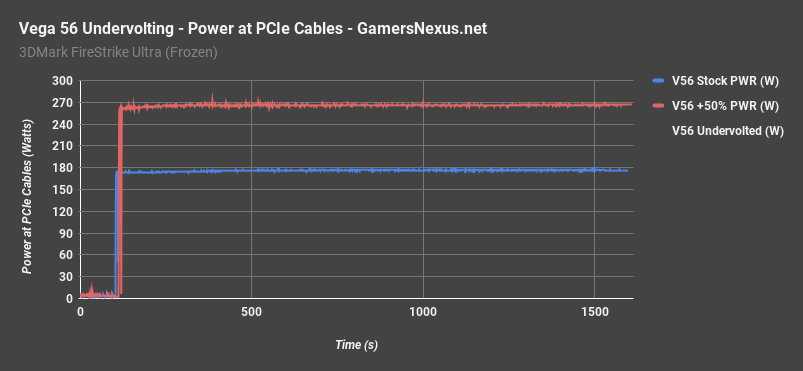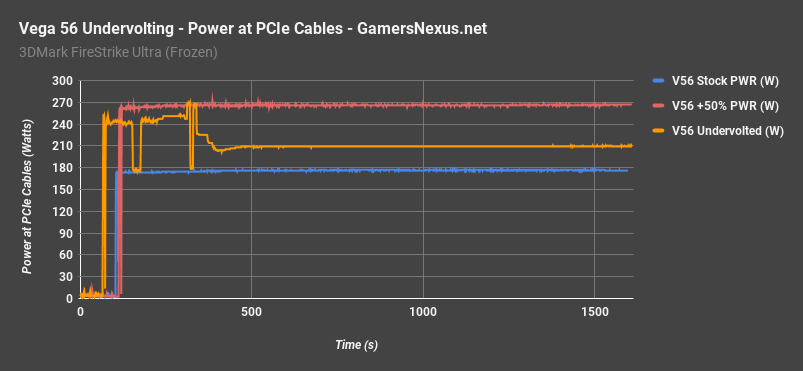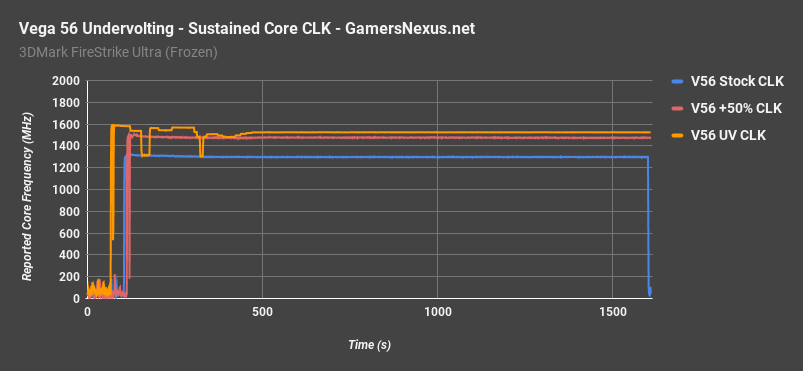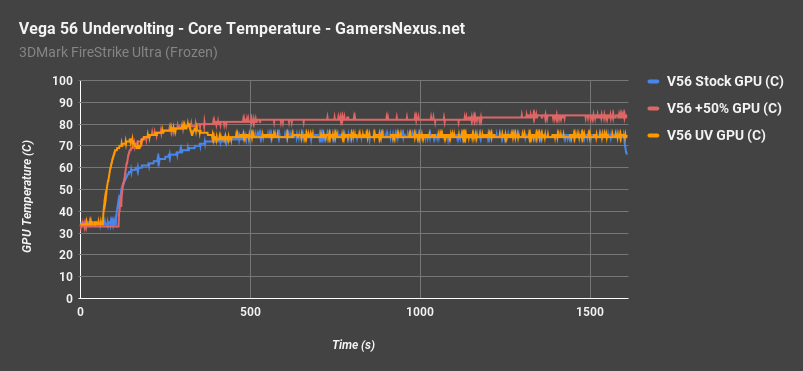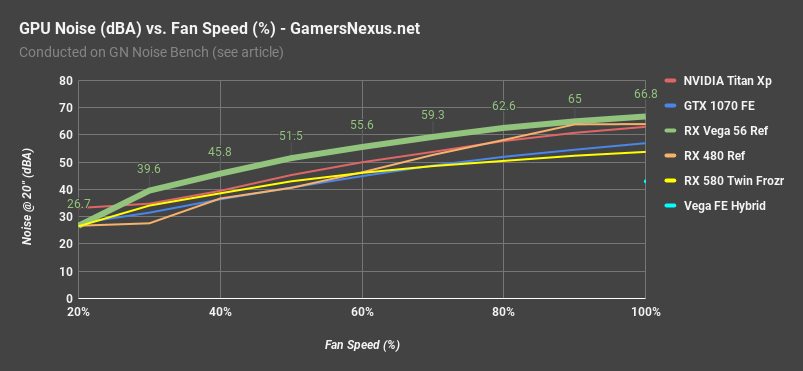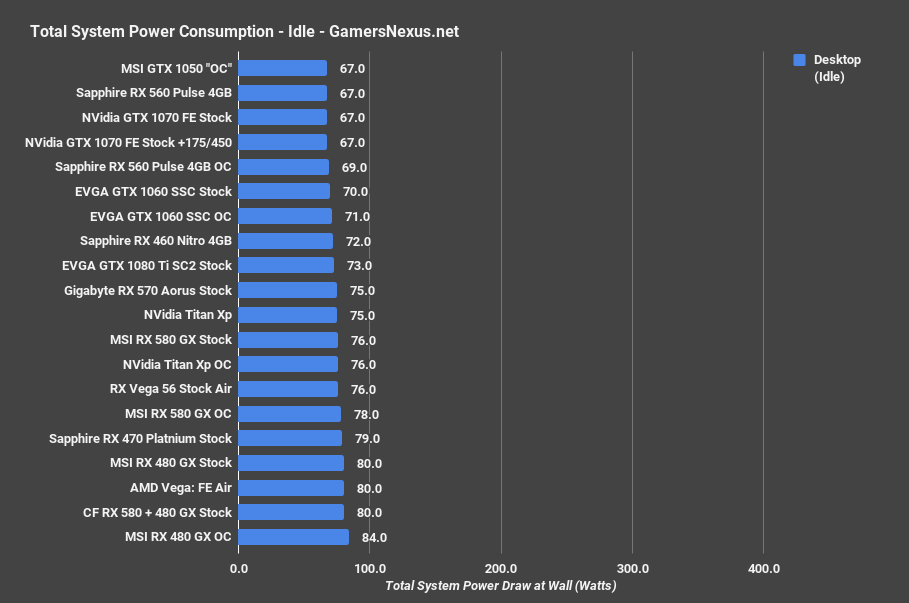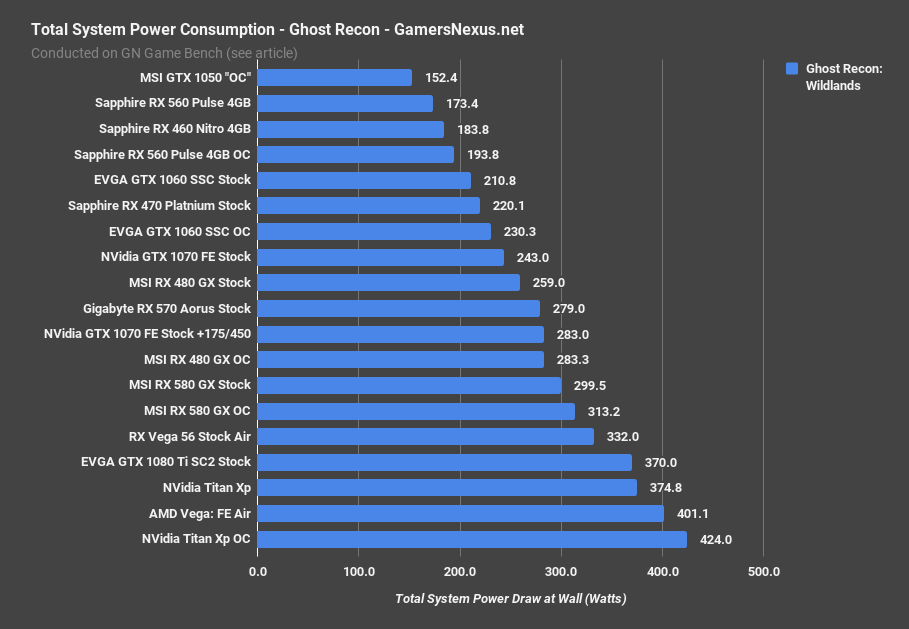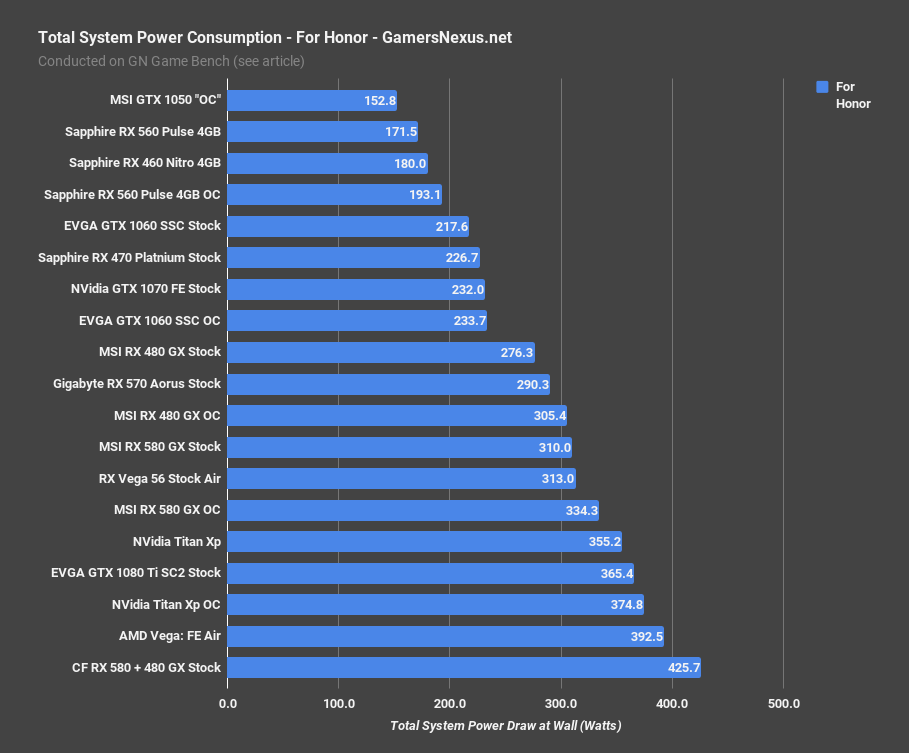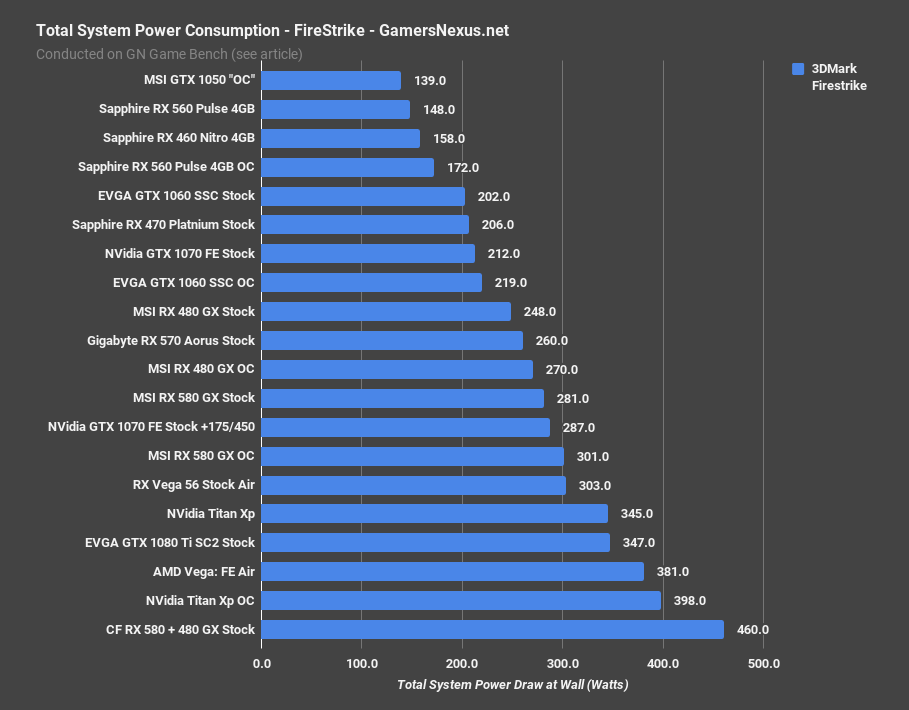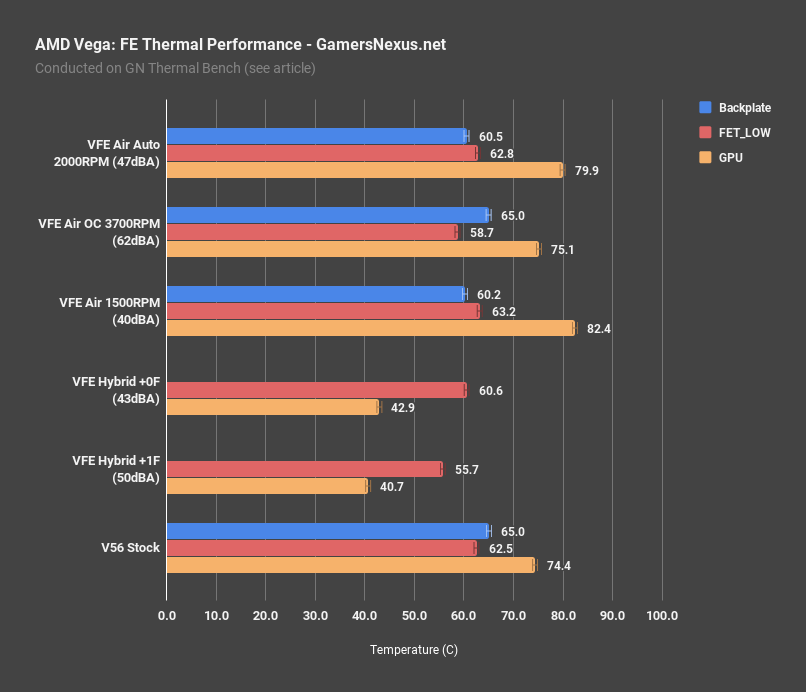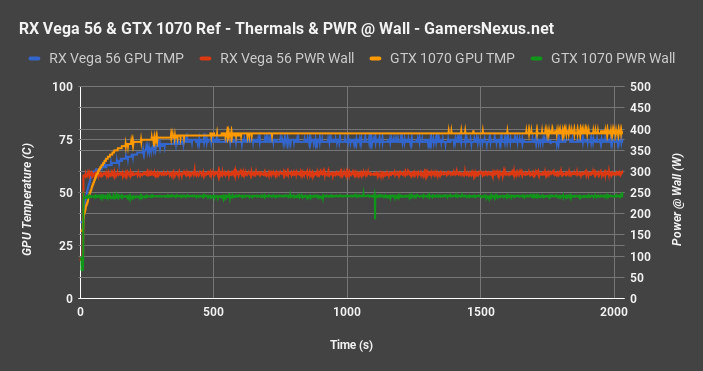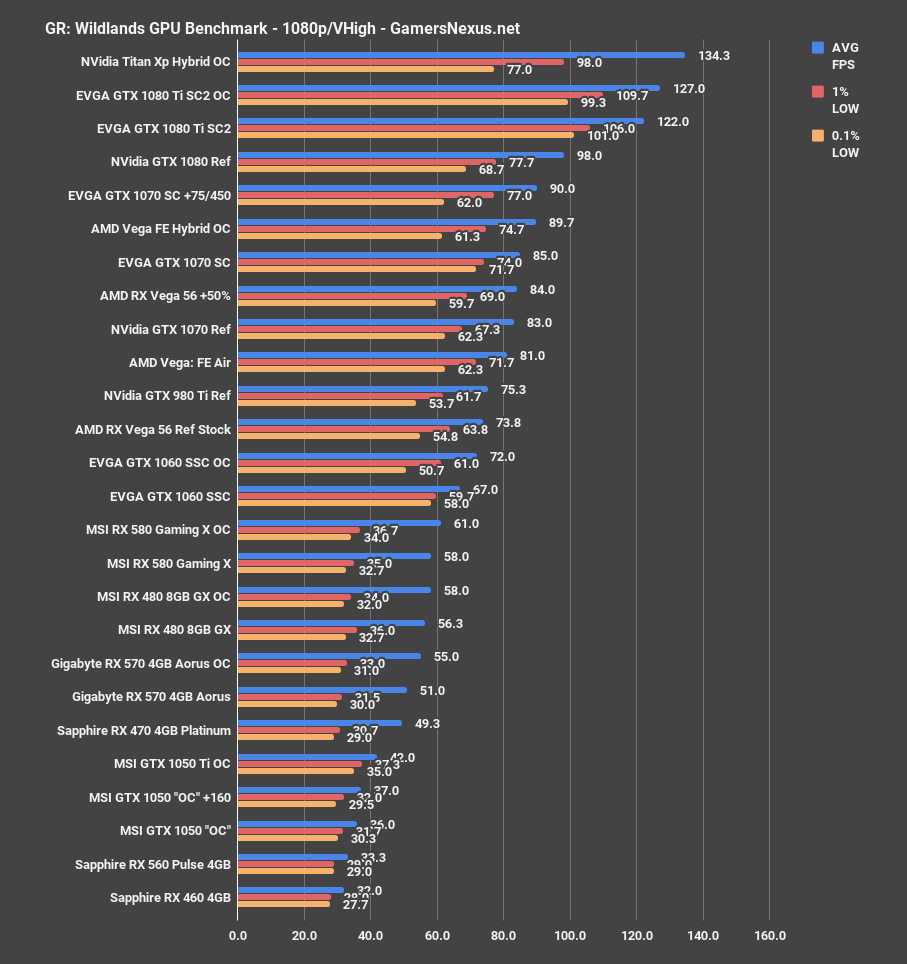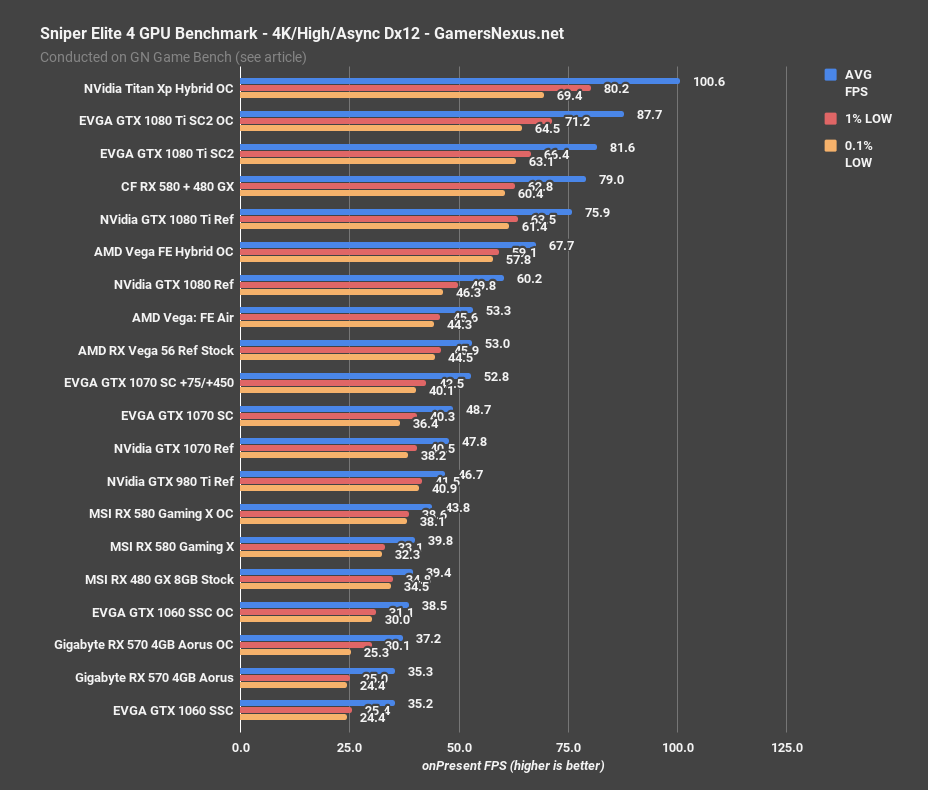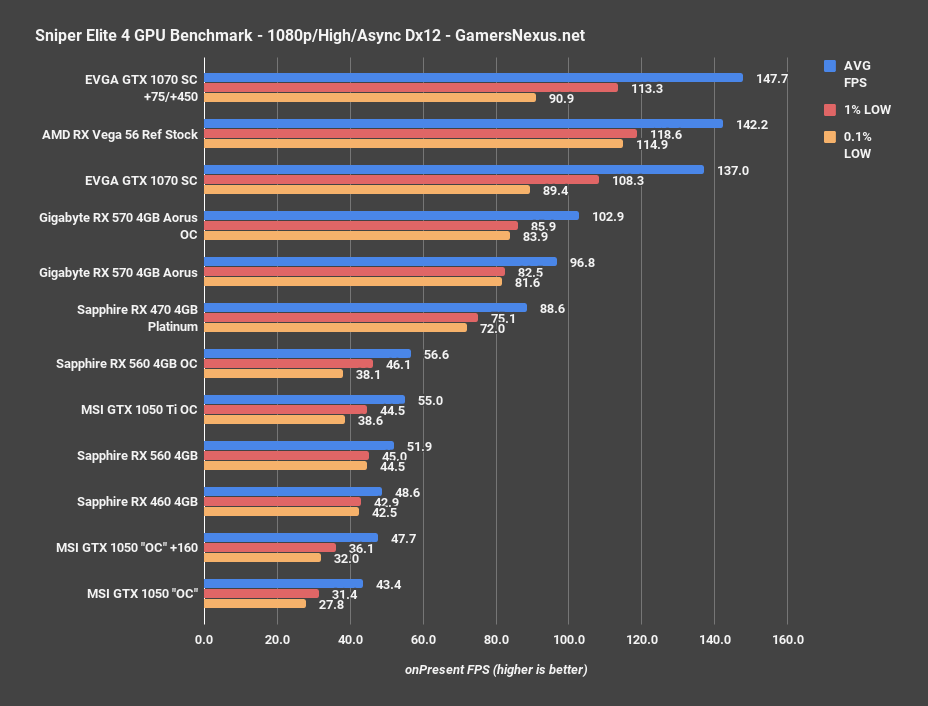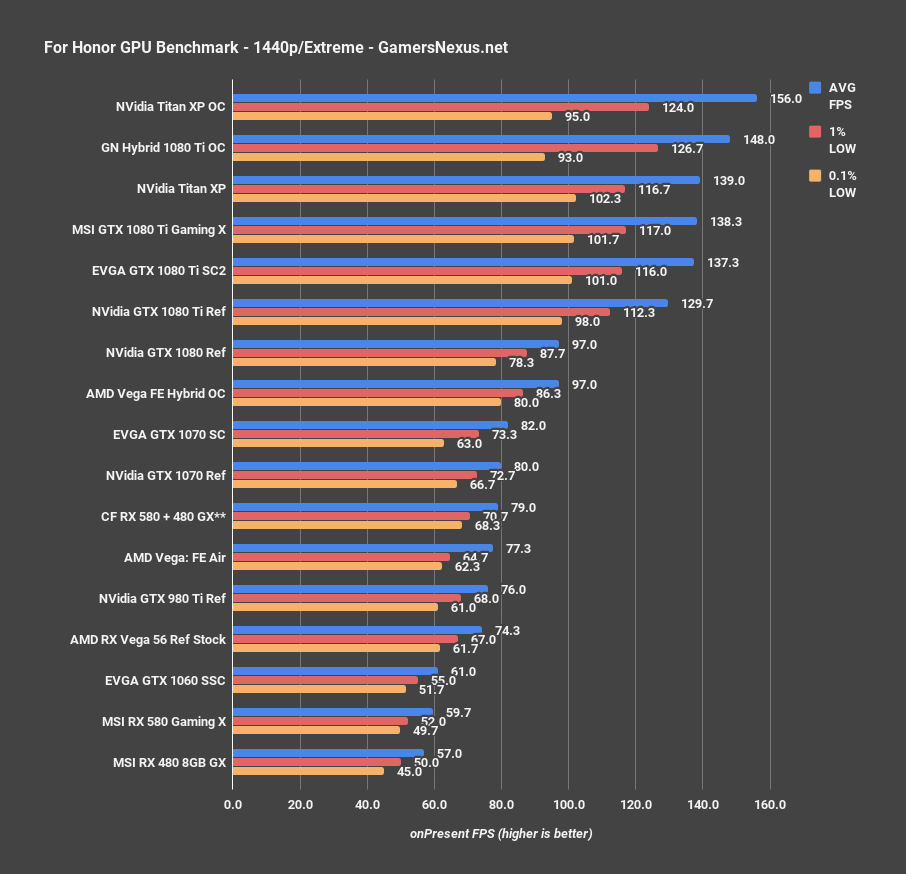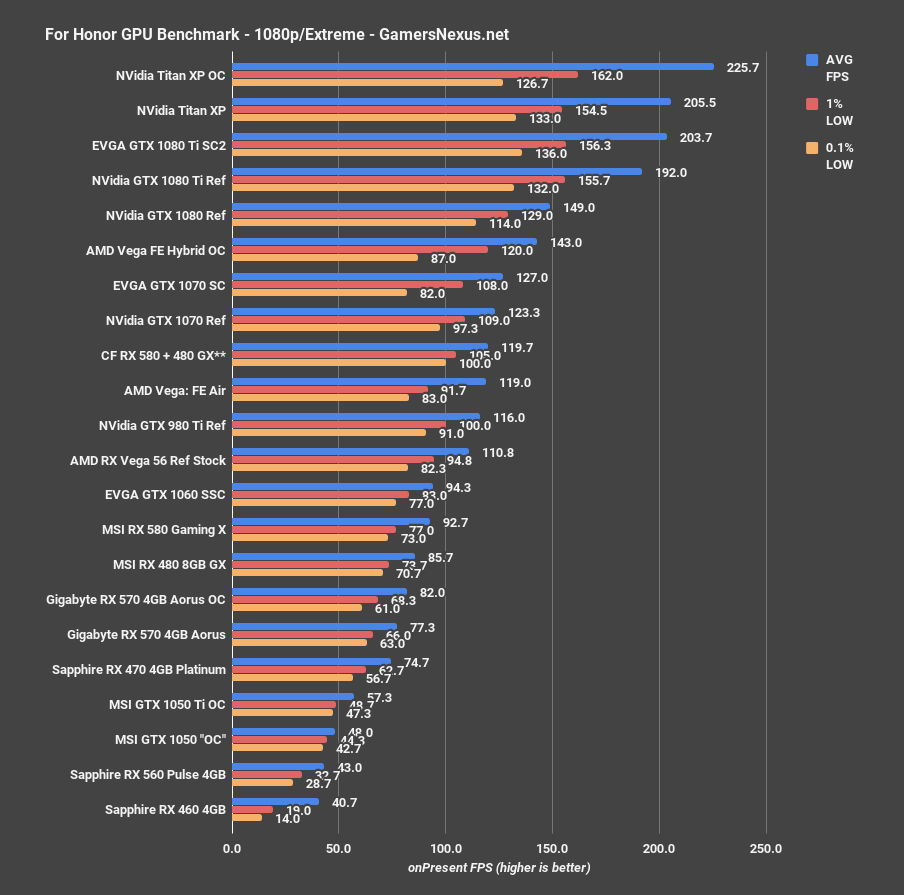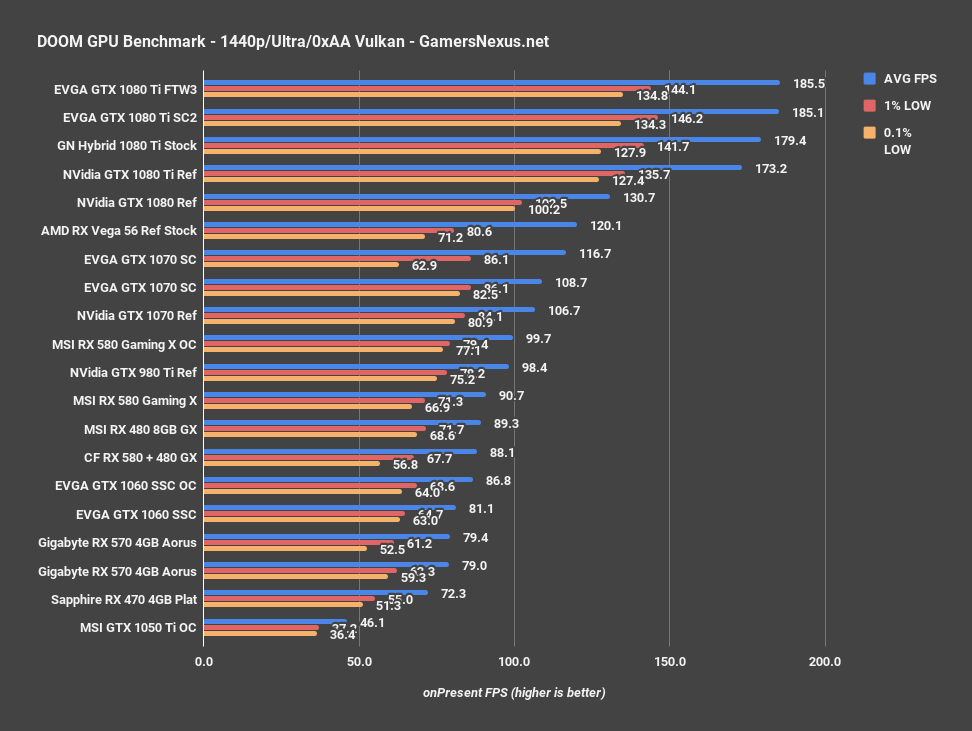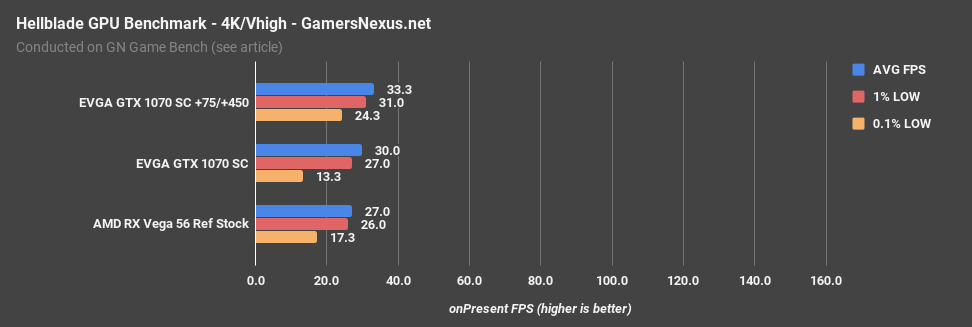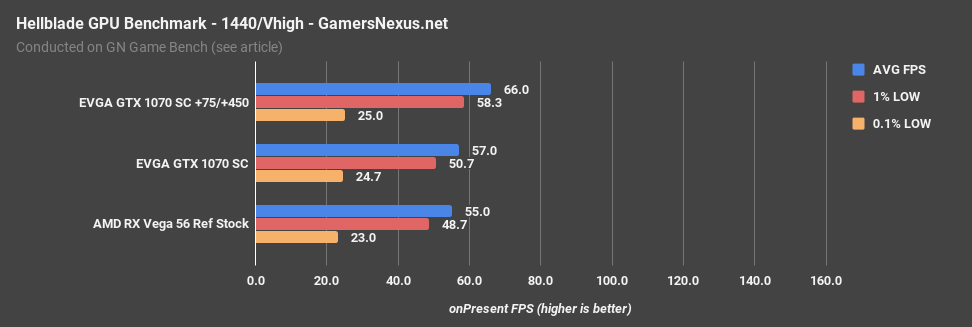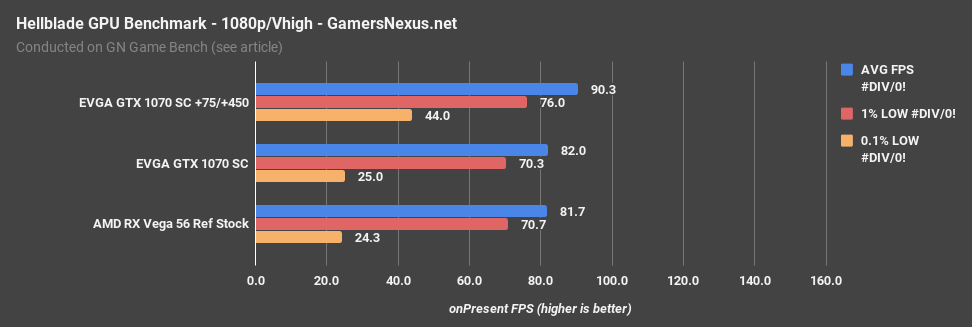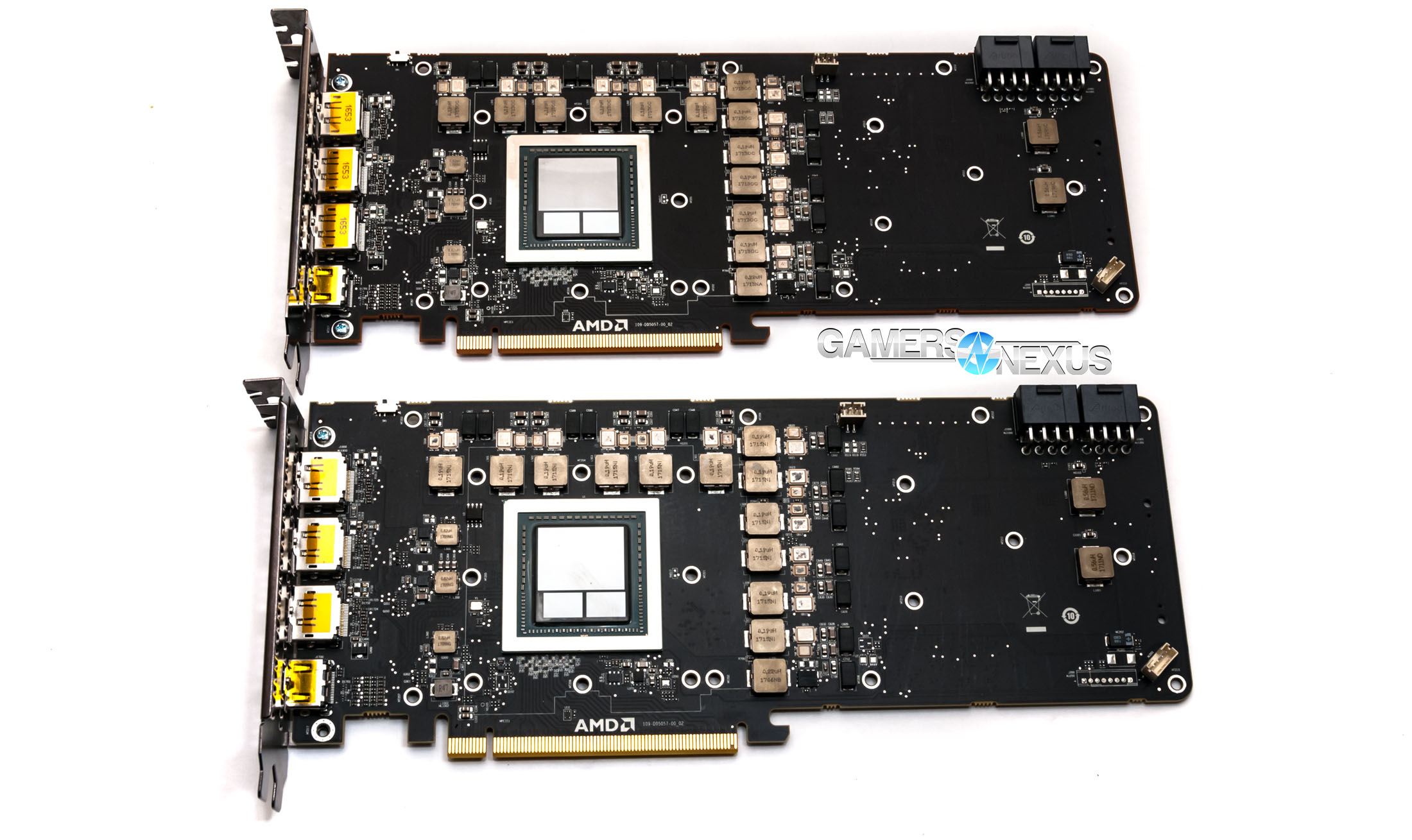“Indecision” isn’t something we’ve ever titled a review, or felt in general about hardware. The thing is, though, that Vega is launching in the midst of a market which behaves completely unpredictably. We review products as a value proposition, looking at performance to dollars and coming to some sort of unwavering conclusion. Turns out, that’s sort of hard to do when the price is “who knows” and availability is uncertain. Mining does all this, of course; AMD’s launching a card in the middle of boosted demand, and so prices won’t stick for long. The question is whether the inevitable price hike will match or exceed the price of competing cards. NVidia's GTX 1070 should be selling below $400 (a few months ago, it did), the GTX 1080 should be ~$500, and the RX Vega 56 should be $400.
Conclusiveness would be easier with at least one unchanging value.
There’s another element, though: Vega’s review cycle was one of the most rushed in recent history, with reviewers slammed between Threadripper (a major launch), Vega 64, and now Vega 56. In speaking with our peers over the last sleepless 27 hours, we think you’ll be seeing a lot of performance summaries today, with many of the conclusions remaining mutable as more testing completes.
And so we present our performance experiments for Vega 56, as they may be. In just a day, we called all-hands to test RX Vega 56 undervolting, BIOS mods and flashing, registry hacking, HBM vs. core overclocking, thermals, power, noise, and gaming performance. Most of the focus for this content is on overclocking info, undervolting, and power consumption (RX Vega 56 vs. GTX 1070, mostly). Gaming performance needs a deeper look at a later date, particularly when drivers get an update from AMD. The final press driver revision was not complete and has several known bugs, primarily in frequency/voltage reporting (probing Vcore points on the card will prove discrepancies). Once AMD gets a more mature driver rolled-out, we’ll try to revisit gaming performance in a more concrete fashion. For now, though, the normal gaming suite is tested and provides a baseline.
But again, this card will receive ongoing testing – give it some time before making a decision, as very few reviewers have had the card for more than 36 hours. Presumably, some of them have also slept.
We’re not going to re-cover all the marketing fluff and specs. It’s Vega 56 – it has 56 CUs and HBM. For the rest of the specs, check our initial announcement news item. We’re focusing on the testing for this piece.
Vega 56 Overclocking, BIOS Modding, & Artificial Restrictions
Vega 56 was exciting to us when first announced. Working with Buildzoid, we wanted to set forth to turn Vega 56 effectively into Vega 64 levels of performance through overclocking, as the CU difference would become less significant with a frequency boon. We quickly found that Vega 56 is limited to 300W power by BIOS, despite the fact that the VRM can easily handle more – it is, after all, the very same VRM as on VFE and V64. The core and the VRM can handle the wattage, but we’re not given that allowance stock. 300A shouldn’t be a problem, 360W shouldn’t be a problem. Vega: Frontier Edition’s PCB and reference VRM are among the best we’ve seen for a card from a first-party manufacturer – it’s on MSI Lightning levels of design, and also happens to be re-used in V56 and V64. See our VFE analysis below, as it applies to V56:
PCB & VRM Analysis for Vega 56, Vega 64, & Vega FE
Between the VRM, PCB, interposer, large die (and yield), and HBM2, we’d be surprised if AMD is making much – if anything – on Vega 56. The price is ultra-competitive with nVidia’s GTX 1070, the PCB and VRM are better than you’d find on most $400 cards, and the die is 484mm^2. Before touching performance, we know that AMD has built an impressively high-end VRM & PCB for a reference card. It’s just too bad that the secondary BIOS doesn’t exist as an “enthusiast mode” – or a toggle for platform security features.
Validation & Security Blocks on BIOS
We flashed BIOS successfully by using a new version of ATIFlash. This was tested by flashing the same BIOS that V56 ships with, just with a different name; unfortunately, even that small of a change is blocked by AMD’s new security features. BIOS now requires a signature, so making a custom BIOS is no longer possible with any reasonable amount of effort. The display refuses to initialize with a modded BIOS – something of a let-down, given AMD’s propensity for boasting its openness and advocacy for users.
After rolling back, we next tried a registry hack that worked on VFE and permitted VFE power throughput to exceed 400W – clearly a functional hack. Using power tables in the registry, we attempted to permit a +100% PWR target to V56, but it didn’t take hold. The same method worked for VFE, so it may just be a matter of time until power tables are built for V56. In the meantime, though, we couldn’t get any of the known VFE soft power modding to work on Vega 56.
We asked AMD why they would so strictly prevent modding, and were given an answer that it’s to comply with Microsoft Secure Boot guidelines. The idea is to increase platform security, which is certainly noble, but that does have the unfortunate side effect of shutting out enthusiast users. Besides, speaking with Buildzoid, we’re both fairly confident that Vega 56 could minimally match Vega 64 if given the right overclocking allowance. AMD wouldn’t want their low-end card to beat their more expensive flagship, particularly given that Vega 56’s cost to build is high enough to minimize or eliminate much direct profit. Of course, the other side of the argument is one of binning: If V56 is comprised of Vega 10 dies rejected from V64 cards, it may be a case of matching the lowest common denominator. Lower power budget would be part of that, though we do think there are ways AMD could make their product more appealing in this category. With a dual-BIOS switch already on the board, there’s a lot of room for play.
As we understand it, V56 and V64 are re-spun silicon of VFE, and now properly enable draw-stream binning rasterization where VFE had it disabled. Other changes to the card are also present and probe-able, like HBM2 being volted at 1.3V on V56 (rather than 1.35 on VFE), limiting clocks to 800MHz stock and ~980MHz overclocked. Of course, mileage will vary per unit, but we were doing ~1100MHz with VFE. Vcore now maxes out at 1.2V as well, rather than the 1.25V of VFE previously. Granted, we’re bumping into a power limit first.
Anyway, despite being disappointingly limited in overclocking, we can still use V56 to prototype performance with FireStrike and learn about behavior of HBM2 vs. Core overclocking.
Note here that overclocking on Vega presently has several bugs, to the point that AMD routinely told us to rely on performance more than frequency read-outs. This is obvious in the software, seeing as it’ll occasionally report 1250MHz while outputting results clearly aligned with 1500MHz clocks. Right now, it is difficult to get hard clock numbers out of the software; we also had issues, as did other media, with overclocking using a fixed clock. We found more success with percent offset overclocking, though later worked with fixed clocks (to some limited success) during undervolting testing. Many of the original VFE undervolting bugs remain, though other bugs have been resolved – like the fan ramping speeds. Fans now ramp properly and nearly instantly when user-initiated changes are put in place, so job well done on that front. The fans are still offset at a different RPM from what the user inputs (tends to be +400RPM on V56), but it’s getting better. We didn’t encounter any catastrophic driver failures, color hangs, or flickering while gaming. The primary bugs have been worked-around through Wattool or other third-party OC software. No blocking issues that we encountered, at least, so that’s good.
Test Platforms
Game Bench
| GN Test Bench 2017 | Name | Courtesy Of | Cost |
| Video Card | This is what we're testing | - | - |
| CPU | Intel i7-7700K 4.5GHz locked | GamersNexus | $330 |
| Memory | GSkill Trident Z 3200MHz C14 | Gskill | - |
| Motherboard | Gigabyte Aorus Gaming 7 Z270X | Gigabyte | $240 |
| Power Supply | NZXT 1200W HALE90 V2 | NZXT | $300 |
| SSD | Plextor M7V Crucial 1TB | GamersNexus | - |
| Case | Top Deck Tech Station | GamersNexus | $250 |
| CPU Cooler | Asetek 570LC | Asetek | - |
BIOS settings include C-states completely disabled with the CPU locked to 4.5GHz at 1.32 vCore. Memory is at XMP1.
We communicated with both AMD and nVidia about the new titles on the bench, and gave each company the opportunity to ‘vote’ for a title they’d like to see us add. We figure this will help even out some of the game biases that exist. AMD doesn’t make a big showing today, but will soon. We are testing:
- Ghost Recon: Wildlands (built-in bench, Very High; recommended by nVidia)
- Sniper Elite 4 (High, Async, Dx12; recommended by AMD)
- For Honor (Extreme, manual bench as built-in is unrealistically abusive)
- Ashes of the Singularity (GPU-focused, High, Dx12)
- DOOM (Vulkan, Ultra, 0xAA, Async)
Synthetics:
- 3DMark FireStrike
- 3DMark FireStrike Extreme
- 3DMark FireStrike Ultra
- 3DMark TimeSpy
For measurement tools, we’re using PresentMon for Dx12/Vulkan titles and FRAPS for Dx11 titles. OnPresent is the preferred output for us, which is then fed through our own script to calculate 1% low and 0.1% low metrics (defined here).
HBM2 vs. Core Overclocking on RX Vega 56
Writing at the tail-end of back-to-back 22-hour work days – one eye now closed to block the monitor’s light – makes recollection of overclocking steps a challenge, but here’s what we’ve got:
The behavioral outcome of HBM2 vs. core overclocking is going to change based on the application, so these results will not apply evenly across all games. Some are more memory-intensive than others. We are using FireStrike for rapid prototyping. Impact in real-world games will vary heavily, though we do find that most games somewhat follow the behavior of FireStrike, even if the scaling isn’t identical.
Here’s a look at FireStrike 1080 graphics score increments as we overclock the card. Stock, we’re at 18816 points, for an AVG FPS of 90 in GT1. Increasing power target by 50% boosts us to 21188 – no other changes – and our power consumption goes from about 196W to about 300W at the PCIe cables. We’ll talk about power more in a moment. Anyway, that’s a gain of 12.6% performance from the power target offset. That’s not linear to all games, of course, but is significant here.
If we overclock HBM2 and offset the power target, we end up about 3.6% boosted at 950MHz over just the power target offset. That’s not a bad gain from HBM2 only. Overclocking to 980MHz HBM2 and with a 10% offset on core – because manual input didn’t hold – boosts us 6.4% over the power offset with no HBM2 overclock, or nearly 19.6% over stock. The memory overclock and power offset alone get us to 19.2% over stock, and the power offset gets us 12.6% over stock.
The take-away here is that HBM2 overclocking and the power offset are far more important than core overclocking on this very limited version of Vega. Core overclocking isn’t worth it for most users, though we can recommend considering the power offset approach. Naturally, this massively increases power consumption (by 50% -- go figure), but we have a solution for that, too – undervolting. We’ll look at that shortly. We’re completely starved for power up until the 50% offset, and even thereafter. This card is capable of more, but unless an AIB partner makes a custom card without the security check, we’re choked at 300W when the board and GPU can both easily handle 360W.
Still, a 180MHz OC on HBM2 gets it past VFE stock HBM2 speeds (945MHz), so not bad on that front. The performance uplift from an HBM-only approach is noteworthy, and more worth the effort. Core overclocking, in our still-limited and expanding experience, does not seem to impact tests quite as much as HBM+power offset. That said, we’re still experimenting with this card, so it’s not a closed book yet. There may be more to it. We are having trouble pushing beyond 9-10% on the core, though. We managed 10.5% for synthetic tests, but couldn’t get it to hold in games. For this reason, we’re revisiting overclocking at a later date for game benchmarking. Need more time to stabilize the OC.
AMD RX Vega 56 Undervolting
So, then – overclocking was disappointingly limited, might as well try the opposite. Let’s undervolt this thing.
Here’s a chart showing Vega 56 power as measured at the PCIe cables with a current clamp, running 12.3V. In absolute stock configuration and during a half-hour burn-in with FireStrike, the V56 consumes on average about 180W at the PCIe cables, not accounting for the other 28W or so at the PCIe slot. The PCIe slot is primarily responsible for fan power, at 2.4A and 12V – though this isn’t always true, it is on V56.
As for the line denoting a +50% offset, remember what we learned earlier: increasing power target alone can stabilize clocks and improve performance by upwards of 12% in FireStrike. Of course, doing this also increases power and lands us at 270W sustained power consumption at the cables, so it’s a bit of a trade.
When undervolting, we managed to stabilize at 1025mv (allegedly -- software is untrustworthy, and we haven’t probed during undervolting yet) with DPM states 6 & 7 set to a sort of fake “1652MHz.” Note that this creates a clock output of about 1524MHz, because AMD now has a dynamic clock, so 1652 becomes 1524 in reality. Anyway, we’ve dropped from 1200mv to 1025mv, increased the power target, and increased the clock speed overall. The result is here:
The first 300 seconds or so was when we were trying to work with AMD’s software issues, at which point we gave up on WattMan and resorted to Wattool. Doing this made undervolting work better, as seen when the line levels-out at around 210W. Note also that the line is nearly perfectly flat now, meaning that we’ve controlled for fluctuations in power delivery and clock frequency. The result is smoothed-out performance on the whole, while drawing 55W less power than the offset V56, but 30W more than the stock card. Ultimately, we get way better performance overall. This could be tuned to a finer degree, we think, though we stopped there for now.
RX Vega 56 Undervolting Frequency Plot
Let’s look at a frequency chart.
We’re at a higher clock than just the 50% offset – 1524MHz, steady as a sniper, versus 1475MHz. The stock card reports “1300MHz” here, resulting in a 224MHz boost for 30W more power – not a bad trade at all, and there’s plenty more room to play if getting serious about it.
Of course, the frequency numbers partly rely on the software being accurate – but validating with performance seems to align things, and our power numbers are from external tools.
RX Vega 56 Undervolting Temperatures
Finally, here’s a look at temperatures. The fan was left alone for all these tests, so there’s obviously maneuverability for users willing to move speeds around.
With the V56 at +50%, we were at 84C by the end of the test. The stock card and undervolted card both fluctuated around the 74-75C mark. Undervolting gave us more clock speed, a middle-of-the-road power metric, and didn’t impact thermals negatively. That’s a big improvement.
RX Vega 56 Reference Noise Levels
Just as a very quick aside, here’s a PWM-to-noise response chart. We’re at about the same noise level as VFE – within variance, anyway – as it’s the same cooler. Nothing new to discuss here. Our auto speed on V56 tends to be 44% RPM, which outputs 48.8dBA. That’s what you can expect during heavier operation. The fan will sometimes sit closer to 40% for lighter workloads, or 45.8dBA. This is neither a quiet nor efficient fan, as is the case with blowers, but it sort of works when blasting at high RPMs. The cooler’s just not very good. We’ll look at that more later.
RX Vega 56 Power Consumption vs. GTX 1070
Big note, here: Many of our above power metrics clamped the 12V lines to the GPU, but we’re using total system power consumption metrics for these next charts. These are useful for deltas across GPU manufacturers, like for comparing the 1070 to the Vega 56.
Anyway, there was much talk of power consumption earlier. Here’s a comparative chart showing idle power consumption at the wall. Again, this is at the wall, not at the rails – so we’ve switched from how we were measuring earlier.
Ghost Recon: Wildlands provides a gaming workload that places the Vega 56 at 332W power draw, adjacent to our GTX 1080 Ti SC2 and just past the RX 580 Gaming X overclocked system. The GTX 1070 system has 27% lower power consumption than the RX Vega 56 system. The overclocked 1070 system consumes about 283W.
For Honor shows power consumption at 313W for RX Vega 56, with the GTX 1070 FE Stock at 232W, or 26% lower power consumption.
Finally, 3DMark FireStrike puts us at 303W system draw, with the GTX 1070 FE at 212W system draw. Again, that’s a difference of about 30%. The RX 580 operates about the same here, once we’ve overclocked, and Vega FE’s system pulls 381W.
AMD RX Vega 56 Thermals vs. Frontier Edition, GTX 1070 FE
Next, some brief discussion on thermals.
Starting off with a look back at Vega: Frontier Edition, including our Hybrid mods and 40dBA noise-normalized test, the Vega 56 card runs a GPU core temperature of about 74-75C under stock conditions. This requires a 38% to 44% fan speed, depending on how the application enumerates the clock and impacts the VRMs. GPU temperature is therefore lower than VFE stock, indicated in blue, but not all that much. It’s about what you’d expect. Fan PWM-to-RPM response isn’t too different here.
The MOSFETs also measure similarly for the right-side hotspot, where we observe a 63C measurement on the Vega 56 card. This is completely within reason for a video card, and can even be run without a baseplate or VRM fan at all; in fact, we tested just that in our Hybrid mod. No trouble there.
Measuring the back-side hotspot on the PCB, opposing the top inductors, the V56 card reports 65C for the PCB rear temperature. Removing the backplate improves thermals in this department by about 3-5C, as the backplate is acting like a heat trap and preventing heat from escaping adequately. AMD could probably ventilate this better in the future – but it’s a reference card, ultimately.
For a comparison to the 1070 FE, here’s a look at a 3DMark burn-in for half an hour. The 1070 system draws about 250W at the wall during the burn, with the RX Vega system drawing about 300W at the wall – or about 20% more. Thermally, the GTX 1070 prefers to run a higher core temperature of 78-79C, with its fan operating at 53% and 42dBA output. The RX Vega 56 card prefers to stabilize around 74-75C, with its fan operating at 44% and 48.8dBA – a noticeable step up in noise, but slightly cooler. There’s room here to decrease noise and increase temperatures, if absolutely desperate, but it’d make more sense to go with a partner cooler instead.
Initial Gaming Performance
Although we used the latest press drivers, we’re still waiting on final, signed drivers from AMD. We’re not sure when those will go out yet, but will revisit gaming performance (if it is different) at the time of their release. For now, see this as a gaming performance preview – don’t read too far into it, as AMD didn’t really provide enough time to thoroughly think about and analyze this data.
Let’s get to gaming. We’re still having issues getting undervoltage to stick outside of initial synthetic test batteries, so will have to revisit that topic later – though we did get things successfully going on Frontier Edition, if you’d like a primer. If undervolting, it’s critical to pay attention to power going through the PCIe cables – it’ll change. Occasionally, even though the undervolt looks successful, we’ll see current at about 3-4A higher than it should be, e.g. 21A instead of 17-18A.
RX Vega 56 vs. GTX 1070 – Ghost Recon: Wildlands Benchmark
Starting with Ghost Recon at 4K, the RX Vega 56 performs at 32FPS AVG, lows at 29 and 28. The GTX 1070 reference and SC cards both sit at around 35FPS AVG. Setting Vega to a +50% power target gets it to 39FPS AVG, and overclocking the 1070 SC ties it with Vega. These are within variance and are effectively equal. There is no so-called ‘victor’ in a 0.3FPS difference.
At 1440p, the RX Vega 56 card operates at 57FPS AVG, placing it behind the GTX 1070 reference card by 7.6%, or behind the SC by 8.8%. Overclocking the SC lands it at 68FPS, with Vega 56 adjacent when set to +50% power target – about 65FPS AVG. Overclocking HBM2 and the core will help here further, in theory, though we’ll test that more soon. In this configuration, we’re measuring 25A, or 300W, at the PCIe cables on the V56.
At 1080p, the V56 operates at 74FPS AVG, or 84FPS AVG when set to +50% power target. The GTX 1070 runs an 83FPS AVG stock, 85FPS for the AIB SC, and 90FPS when overclocking the SC.
RX Vega 56 vs. GTX 1070 – Sniper Elite 4
Where GRW tends to show an nVidia advantage, Sniper tends to show an AMD advantage.
At 4K, V56 operates an AVG FPS of 53, followed by the overclocked 1070 SC also at 53FPS AVG – though with marginally less consistent frametimes. The GTX 1070 SC at 49FPS is 8% behind here, with the reference 1070 at under 50FPS.
Note also that Vega: Frontier Edition comes off looking poor in this scenario, given its tied performance with V56. From what we’ve been told by Rob of TechGage, friend of the site, the Vega 64 and 56 cards still possess decent professional performance. Sort of makes VFE look even odder than it already did.
Here’s 1080p:
Ashes of the Singularity – RX Vega 56 vs. 1070
Ashes of the Singularity in Dx12 runs V56 at 67FPS AVG, with the GTX 1070 SC trailing 5% behind at 63FPS. The reference card operates a 61FPS AVG. Overclocking levels things out, though we haven’t fully overclocked V56 yet, so AMD still has some room there to boost beyond the 1070 SC – check back this week for more of that, hopefully.
For Honor Benchmark
With For Honor at 4K, the V56 runs 38FPS AVG against the 1070 reference card’s 41FPS AVG. Vega FE sits at 40FPS AVG in this title, for reference.
At 1440p, the V56 runs 7% behind the reference GTX 1070, or 9% behind the SC. Framerates here are in the 70s for Vega 56, with the GTX 1070s stretching to the low 80s.
1080p illustrates the gap the most, with the GTX 1070 FE at 123FPS AVG, versus the 111FPS AVG of V56. The SC operates at 127FPS AVG. These are 11-14% ahead in this title.
DOOM Benchmark – RX Vega 56 vs. GTX 1070
DOOM at 4K posts the V56 at 61FPS AVG, with the GTX 1070 SC at 54FPS AVG. Like Sniper, AMD tends to receive favor in DOOM with Vulkan, which is what we’re seeing here. The lead over the 1070 SC is about 13% in this particular title, for one of the more remarkable boosts over nVidia’s baseline.
Here’s 1440p:
Hellblade GPU Benchmark – RX Vega 56 vs. GTX 1070
We just added Hellblade to our bench, so it presently only has the 1070 and V56 on the charts. Before anyone cries that the reference 1070 isn’t on there – yes, we’re aware. No, we can’t manipulate the space-time continuum. There’s more work to be done, but the limited time AMD provided on this bench means that, for now, this is where it stands.
Conclusion: More to Contemplate
This really is a “wait and see” situation. That’s how Vega: Frontier Edition launched – “wait and see for gaming” – and now we’re waiting to see how mining impacts prices. It could well be that gamers actually get a shot at these cards, ideally for MSRP, and AMD starts competing in the mid-range of the GPU market. We’re buying Vega 64 to independently analyze, so be sure to keep an eye out for that, too.
It’s tough to call a “winner” right now. The GTX 1070 is clearly superior in its lower power consumption, but the 1070 and V56 exchange places in gaming benchmark – it just depends on which game and API is on the bench. If it’s DOOM or Sniper, AMD’s in the lead. If it’s Ghost Recon or For Honor, nVidia’s in the lead. Speaking raw FPS and frametime consistency, of course. The power and thermal data is up above, if that’s of interest in the decision.
But yes, we really can’t call it right now. We’ll wait for the prices to normalize before commenting. If both the 1070 and V56 were available at MSRP, it’d be a fair fight worthy of calling winners. As of now, it could be the case that V56 joins the 1070 in being over-priced by retailers. If that’s the case, it’ll come down to who’s least overpriced, assuming power is a non-issue. Once the card is on retailers, it should be available here -- we'll see what they do for prices.
That said, don’t buy the reference card unless going H2O. The reference cooler is objectively bad and, as expected, loud. Wait for partner cards – particularly in the event they start permitting higher power throughput. That’ll be a big deal.
As of now, though, we can minimally say that the V56 competes well in raw frame throughput with the GTX 1070 – it leads in some games and loses in others, which is what good competition looks like.
We’ll think this over more as prices stabilize.
As for now, given that we had about a day to test -- as did most other media -- it's time for bed. AMD's Vega launch followed Threadripper awfully close behind, with the latter launching four days ahead of the former.
Editorial, Testing, Video: Steve Burke
(Andrew was on vacation!)
BRoll: Keegan Gallick
